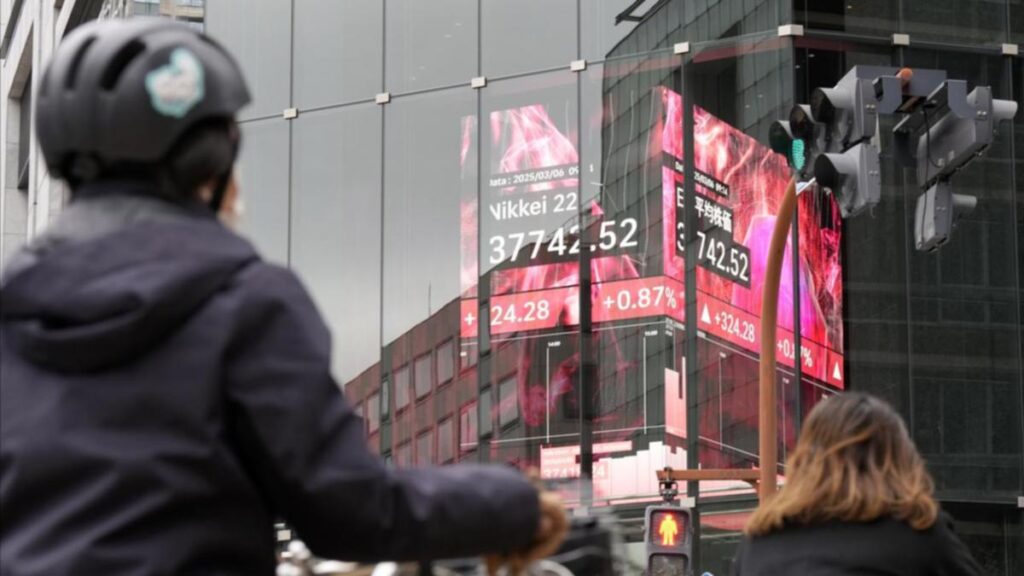Asian stocks have risen, taking cues from the Wall Street, as the prospect of narrower-than-feared US tariffs boosted risk appetite, while the dollar hovered near three-week highs after upbeat economic data provided some comfort.
Investors have been focused on the impending reciprocal tariffs promised by US President Donald Trump and its impact on the global economy as trade war fears grip markets.
Trump said on Monday automobile tariffs were coming soon even as he indicated that not all of his threatened levies would be imposed on April 2 and some countries may get breaks.
That was enough for investors to send US stocks higher. The S&P 500 closed at its highest in over two weeks, while a rally in tech stocks led Nasdaq up over two per cent.
Asian stock bourses joined in on Tuesday morning, with Japan’s Nikkei and stocks in Taiwan rising over one per cent. European futures also pointed higher in early Asian hours.
“It seems we are getting a better picture for what these trade measures might be and if nothing else that’s bringing a little more certainty to the markets,” said Kyle Rodda, senior financial markets analyst at Capital.com.
Chinese stocks were a lot more subdued. Hong Kong’s Hang Seng index fell one per cent, while the blue-chip CSI300 index was little changed.
“The tone on trade may be softening, but policy risks remain elevated,” said Gary Dugan, chief executive officer at Global CIO Office. “The headwinds to the market are still very real.”
Kristina Clifton, an economist at the Commonwealth Bank of Australia, said the markets had not priced enough bad news for the world economy from the upcoming tariff announcements.
“Bad news for the US and global economies can ultimately support USD because of its safe haven status.”
The dollar hit a three-week high against the yen at 150.95, after jumping 0.9 per cent in the previous session, while hovering at its strongest since March 6 at $1.0781 per euro after stronger-than-expected US economic data.
Data showed S&P Global’s flash US Composite PMI Output Index, which tracks the manufacturing and services sectors, increased to 53.5 this month from 51.6 in February. A reading above 50 indicates expansion in the private sector.
The PMI would suggest the economy was regaining speed after hitting a soft patch halfway through the first quarter. But so-called hard data, including retail sales and the employment report, have hinted at cracks in the foundation of the economy.
Investor attention will now be on the size of the reciprocal tariffs to be announced next week as well as which countries will be targeted by the Trump administration.
Oil prices were little changed on Tuesday Asian hours after rising one per cent in the previous session as investors weighed the impact of Trump’s announcement on social media of tariffs on countries buying oil and gas from Venezuela.
Brent crude futures were up three cents at $US73.03 ($A116.25). US West Texas Intermediate crude rose one cent to $US69.12 ($A110.03).
Gold was steady at $US3,013.75 ($A4,797.44) per ounce on easing worries over US tariffs and after a Federal Reserve official signalled a cautious stance on interest rate cuts this year.



